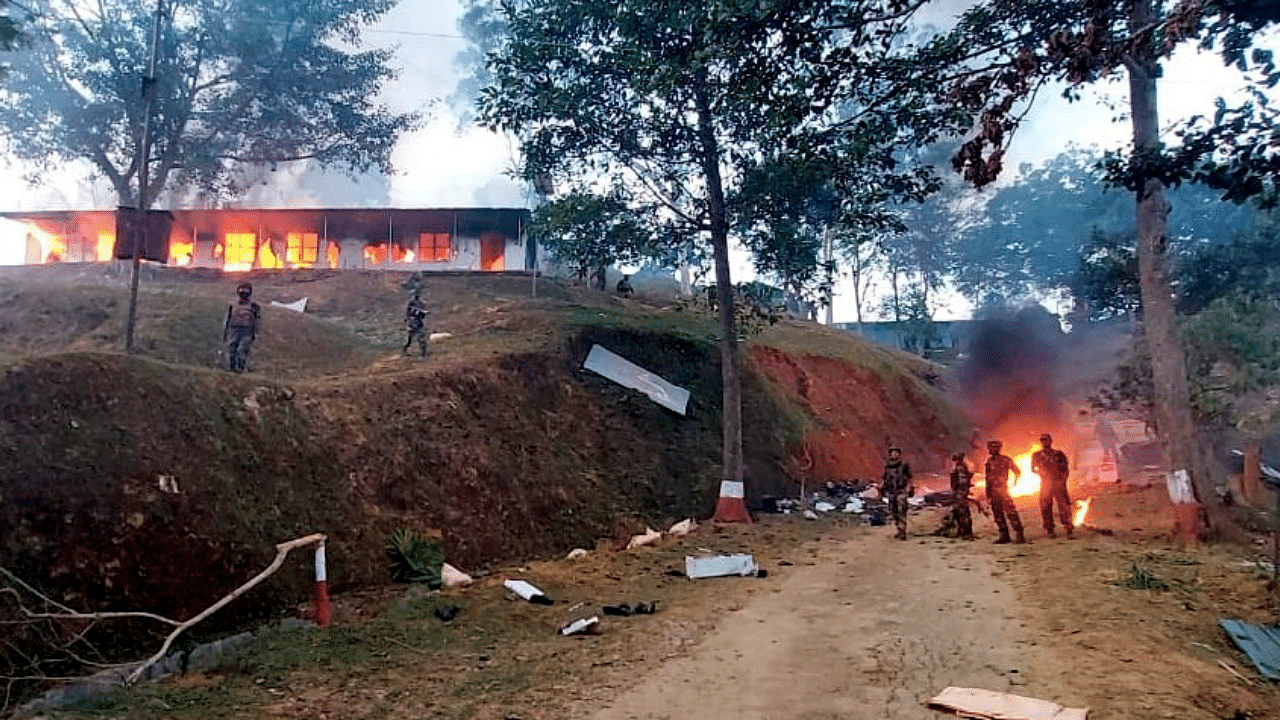
The already faltering Naga peace talks will be impacted by the killing of 14 civilians in Nagaland’s Mon district as part of a counter-insurgency operation gone wrong. The NSCN(I-M), the key body negotiating with the Centre, had said this is a “black day” for all Nagas, while the Naga National Political Group (NNPG) has blamed the AFSPA for such incidents.
Where have Naga talks reached so far?
The Naga rebel group has told the Centre that an accord cannot happen unless two core demands — a separate flag, and a Constitution for the Nagas — are fulfilled. The Centre has said it cannot accept these demands and the rebel group has said no to all alternatives suggested like a cultural flag instead of a national flag.
“Interestingly, the Government of India is talking in a different language to different negotiating Naga groups in the matter of the Naga flag. But NSCN is not impressed when the offer was made to accept the Naga flag as a cultural symbol,” the group said last month after the latest talks hit a wall.
The NSCN-IM signed a "framework agreement" in August 2015 and the NNPG, a forum of seven other rebel groups also signed another agreement in November 2017. A "final and comprehensive agreement" was supposed to be signed to end the country's oldest insurgency. Sources told The Indian Express that now it is uncertain when a final deal can be achieved.
Also Read | Army made no attempt to identify civilians before shooting, tried to 'hide' bodies: Report
How will the civilian killings affect the talks?
A senior Nagaland official told the paper that these killings will awaken a 'India versus Naga citizens' narrative. “People in these parts quote operations of the 1950s and ’60s to articulate perceived atrocities by the Indian state. So, imagine what a fresh incident can do,” the official is quoted as saying.
The incident can also be used by some insurgent groups to strengthen the NSCN(IM) which will then exert a stronger push for its demands before the Centre, the report said.
The NNGP, which had been supportive of the Centre’s peace process so far and had withdrawn its demands of a separate flag, condemned the killings and said the Army’s actions “belittled commitments made by the Indian PM and Home Minister”.
What is the reason behind a stalemate?
The government has said that the statements made in the framework agreement are vague enough that both sides interpret them to suit their narrative.
The NSCN (IM) says the agreement states that India and Nagaland would share “sovereign power” but coexist as “two entities’. The Centre however has said there was no question of granting sovereignty to a state within the country.
Government sources told IE that this agreement was dictated by the politics of 2015, when it was drafted. “Flag and constitution were not such touchy issues as a state with precisely these rights (Jammu & Kashmir) existed then. It may be argued though that those drafting it should have pondered over the ruling party’s ideological position on Kashmir even then and advised the political top brass accordingly. Now, after the decisions of August 5, 2019 on Jammu and Kashmir, these issues have become non-negotiable,” another government official is quoted as saying.
Also Read | Security forces fired at villagers without any provocation, claim Nagaland police in FIR
What’s the way forward?
The government has its work cut out in the talks as it needs to convince the Naga people that it is on their side and will resume the discussions with the rebel groups.
Now the only solution is for the government to clearly declare what it cannot give and then ask NSCN(I-M) to negotiate on other issues,” a senior official from Nagaland said.
Watch latest videos by DH here: